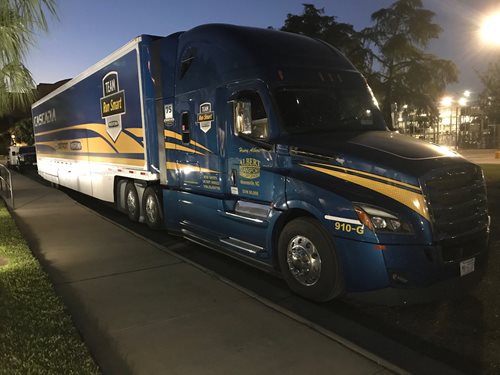
The nightlife I am referring to is driving the night shift. Due to scheduling, I have found myself working the night shift when most people are asleep. The majority of the time my business model requires that I operate during the daylight hours as dictated by my pick up and delivery schedules.
There are advantages and disadvantages to working different shifts. The advantages to day shift are more shippers and receivers are open, it is a normal time to interact with family and friends, as well as most trucking services are open during these hours. Of course, there are disadvantages to working the day shift as there is more traffic congestion and limited parking opportunities when your day ends. By contrast, the greatest advantage I have found to night driving is less traffic and congestion, plentiful parking opportunity to park at the end of my shift, along with a peaceful drive. The disadvantages I have found on the night shifts are limited dining opportunities, overall reduced truck service availability, along with the fact everyone I want to talk to from a personal or business perspective is asleep.
Another plus is that I have found working the night shift comes in regard to fuel mileage. There is less traffic congestion and this leads to being able to maintain a steady rate of progress as I go down the highway. In addition to the reduced traffic congestion, I have also found the weather conditions to be less windy which also contributes to increased operating efficiency.
The conditions that working the night shift has afforded me has been a great help to my ongoing 70+/10 project. For those of you that don’t know about my ongoing project, 70+/10 this is a project where I am cruising at speeds up to 75 mph where safe, legal, and posted with the goal of obtaining double-digit fuel mileage. One of the obstacles that makes it difficult for me to hit double-digit fuel economy at higher speeds is the interaction of slower moving vehicles during the daylight hours. Another factor that comes into play is as you pass other vehicles is the disturbed air you encounter as you pass a vehicle which also has an effect on fuel economy. In racing, this is known as dirty air which is what happens with two vehicles air flow is buffeting off of one another. For those of you that have an instant fuel use display take note of how the readout is affected by the “dirty air” as you pass or are passed by another vehicle.
This entire project of 70+/10 has led me to look into every factor which effects fuel mileage while trying to obtain this extreme goal. Switching work shifts is just one area which I am experimenting with. In the not too distant future, I will be providing all of you with updates on the results of this ongoing project of trying to obtain 10+ MPG at a higher rate of speed.